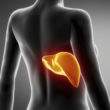There’s an uncommon form of inflammatory arthritis called adult still’s disease. Just how rare is this? Experts say that in 100,000 adults, about only 1 of them is affected by it. There is a counterpart of the said joint problem in children, which is known as juvenile idiopathic arthritis. Unlike adult still’s disease, juvenile idiopathic arthritis is said to be the most common form of arthritis that affects children.
Going back to adult still’s disease, it is something that is characterized by flare-ups and remissions. This means that it can show up and disappear, then come back again. Sometimes episodes are years away from one another, but there are instances wherein they are just a few months apart. There are cases of adult still’s disease wherein there is only a single episode — it strikes an individual, goes away and never comes back.
Below you will find some of the most important matters you need to know about this debilitating disease:
Causes and Risk Factors
To date, no expert really knows the exact cause of adult still’s disease. However, numerous studies suggest that it has something to do with antigens, which are substances that cause the immune system to spring into action. In other words, it is believed that adult still’s disease is triggered by an infection.
Men and women alike may suffer from this joint condition. Experts say that those who are between 15 and 25 years old as well as 36 and 46 years old are at higher risk of having adult still’s disease.
Signs and Symptoms
Initially, adult still’s disease makes its presence known in the form of a sore throat. It’s very much likely for the lymph nodes in the neck to become swollen. Afterwards, high fever shows up. It usually spikes in the late afternoon, or sometimes early evening. It is not uncommon for this high fever to spike twice a day, with the person’s body temperature returning to normal in between.
Rash that is similar to hives is also present. Pink-salmon in color, it tends to come and go together with the fever. It usually affects the trunk and extremities.
Definitely, the joints become painful and swollen. Affected joints are usually those in the knees and wrist, but it can also affect the neck, shoulder, finger, elbows, hip, and ankle joints. Usually, the affected joints tend to become achy and inflamed for at least a couple of weeks. The muscles tend to ache, too.
Complications
What makes adult still’s disease particularly dangerous is the fact that it can cause long-term inflammation in the body. The said inflammation not only affects the joints, but also some vital organs. It is due to the chronic inflammation of the organs why adult still’s disease can lead to a host of complications.
For instance, the joint disease can cause the heart’s covering and the heart muscles themselves to get inflamed. It may also cause the pooling of water around the lungs, which can make breathing a problem. In rare instances, adult still’s disease may cause liver problems, decreased blood cell counts and increased triglyceride levels.
Definitely, adult still’s disease can damage the joints in the long run. Since the disease usually targets the knees and wrist, these joints tend to be the ones damaged.
Diagnosis and Treatment
Because the initial symptoms of adult still’s disease resemble those of other health conditions, it may take a doctor some time to have the joint problem identified. Several different tests may have to be done in order to have other problems ruled out. Examining the heart, lungs, liver and spleen may help reveal the disease.
Non-steroidal anti-inflammatory drugs or NSAIDs help relieve pain and swelling associated with the early stages of adult still’s disease. One of the most common treatments for the condition is prednisone, something that’s administered only for a short period of time due to the side effects. A doctor may recommend immunosuppressive drugs for severe or long-term cases of adult still’s disease.
Physical therapy and certain exercises are also beneficial for a person suffering from adult still’s disease. The intake of supplements such as calcium and vitamin D are usually recommended in order to ward off osteoporosis or the thinning of the bones, which is one of the side effects of prednisone.













